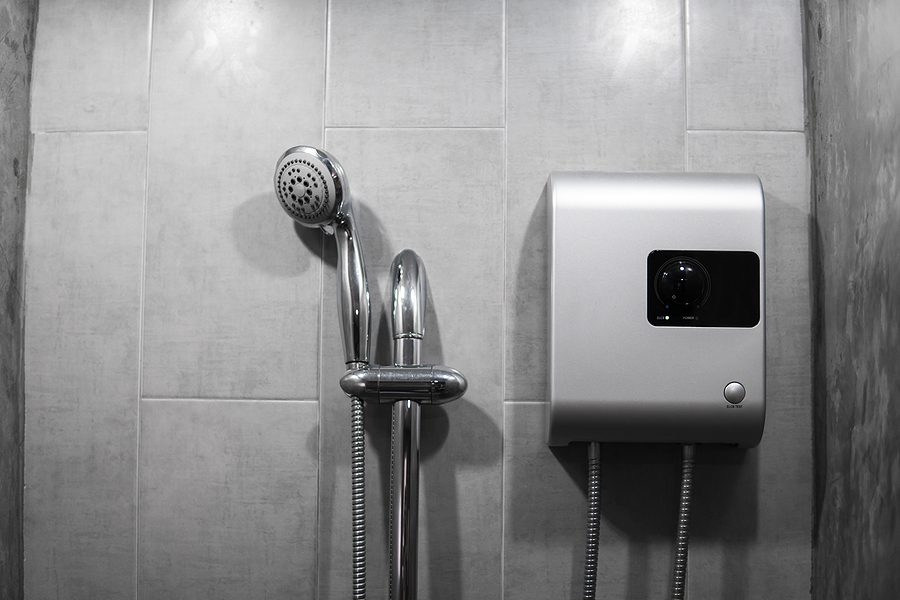
As tankless water heaters are also known as instant water heaters or on-demand water heaters, they have various benefits over traditional tank-style water heaters. All items have their downsides, and window treatments are no exception. Traditional tank heaters use power to keep water hot, but this system only uses energy when you turn on the hot water tap or use other appliances. Since they may work at their own pace, they can save money and resources.
A tankless water heater’s capacity to save energy and money over a traditional one is an added perk. A tankless water heater can make as much hot water as you need. It is also smaller, less likely to leak, and usually lasts much longer.
Tankless water heaters are significantly more expensive to purchase and install than traditional tank-style heaters. On average, tank-style water heaters are three times more costly than their tankless counterparts, including the cost of installation. Tankless water heaters aren’t as good as traditional water heaters with storage tanks because they cost more upfront. This is the biggest problem.
- It takes longer for them to supply hot water.
- When many water outlets are running simultaneously, the temperature of the water changes a lot.
- Without electricity, there is no way to heat the water.
Before making a final decision, make sure you’ve done your homework on the advantages and disadvantages of a tankless water heater. Our goal is to provide you with all the information you need to make an educated decision about tankless water heaters.
The Cons of Tankless Water Heaters:
- Both the purchase and the installation of the system are too expensive.
- It Will Take More Time to Bring Hot Water to Your Customers.
- Sandwiches and iced water
- The usage of several outlets causes unpredictable water temperature variations.
- At 68°F, consistency is difficult to achieve.
- There is no hot water when the electricity goes off.
The Con: High Upfront Cost of the Unit and Installation
The upfront cost of purchasing and installing a tankless water heater is its most significant drawback.
According to several product review websites, a tank-style water heater costs an average of $889, not including installation. Installing tankless water heaters might cost as much as $3,000 or more.
Tankless water heaters are more expensive because of the additional expense of installation. To deal with the higher load, installing new wiring or a vent pipe may be necessary.
Because tank-style heaters have been around for longer and labor costs are lower, more professionals can install them.
If a tankless water heater is exposed to hard water, it may have to work harder and eventually fail (water with high mineral content).
Certain manufacturers will void your warranty if you don’t install a water softening system. The inclusion of this component entails additional expenses.
It takes more time to deliver hot water.
On the other hand, tankless water heaters take longer to heat and distribute hot water than traditional tank heaters.
Keep in mind that tankless water heaters don’t always have a ready supply of hot water. The water in the pipes is either cold or at least room temperature when a hot water tap is turned on. As the distance between the heater and the tap increases, the amount of time it takes for the hot water to arrive increases.
Tank-style heaters deliver hot water faster by having a supply ready to go and not needing to be turned on.
A cold-water sandwich is a disadvantage.
When researching tankless water heaters, the term “cold water sandwich” is likely to be mentioned.
You get a quick burst of hot water, followed by a short shot of cold water that quickly recovers to its temperature while occasionally using hot water.
You could quickly switch on the hot water while hand-washing your dishes. As a result, hot water is pumped through the system.
Because of the little lag between when the water starts flowing and when the heater kicks on, you may experience some chilly water at first.
It won’t bother you if you aren’t used to the cold-water sandwich sensation.
Consistent Water Temperature When Using Multiple Taps/Showers/Appliances
When you and your family return from a day at the beach and everyone wants a shower, you’re in a pickle, as I said earlier.
When everyone in the family has a shower simultaneously, tankless water heaters eliminate this concern.
One problem with tankless water heaters is that they can’t keep up with many showers going at once.
Depending on the size of your water heater, you may be able to operate a shower and a dishwasher simultaneously.
The flow rate is the most significant consideration when comparing tankless water heaters.
When it comes to tankless water heaters, flow rate refers to the volume of water that may be heated at one time. When it comes to expressing how much water may be heated at a particular time, Gallons Per Minute (GPM) is a standard.
The graph information below shows the usual flow rates for various types of outputs.
- Average Flow Rates (GPM) at the Outlet
- .5 – 1.5″ Bathroom Faucet
- 1 – 1.5 Dishwasher
- 1.5-inch Kitchen Faucet
- 1.5 – 3.1 Washing Machine (Clothing)
- Shower 2.5 – 3
- Tub 4
Summary:
Tankless water heaters come in a broad range of sizes, from enormous units for residences that use a lot of water to compact units for those that use a lot of water.

